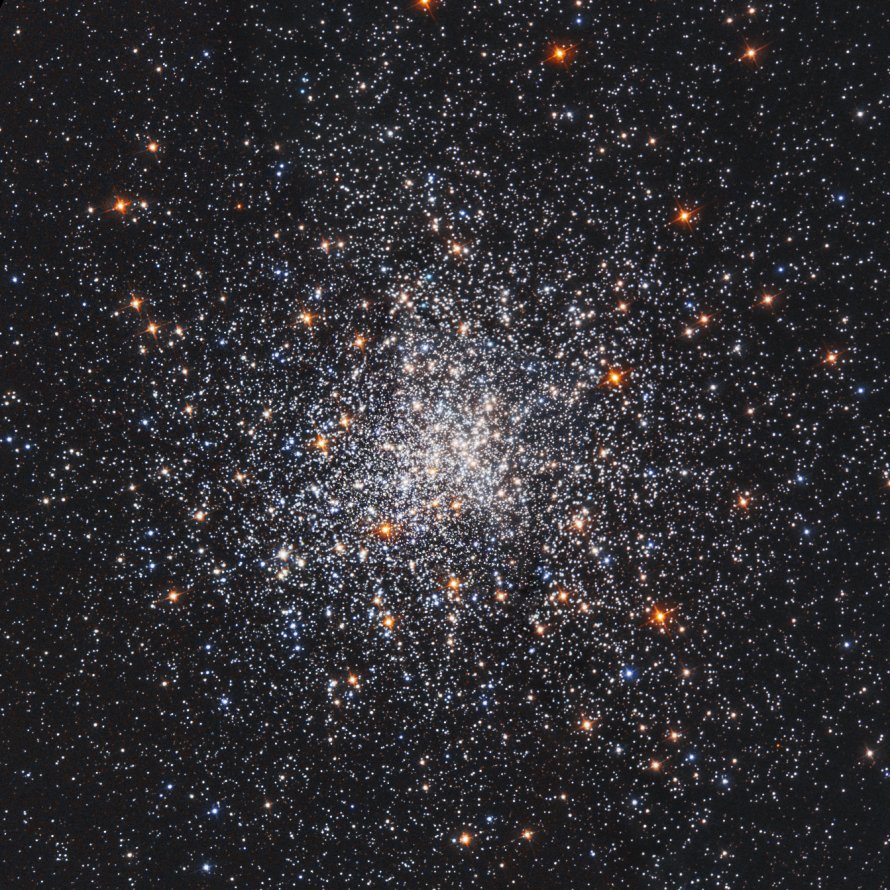M79 (NGC 1904)
Messier 79 (NGC 1904) is a globular cluster located in the constellation Lepus, in the Galactic Center of the Milky Way Galaxy in the Local Group of galaxies. M79 is 42000 light years away from Earth.
M79 is best viewed during winter, is magnitude 8.7, and can be viewed with binoculars. M79 is 8.7' in apparent size. For reference, the full moon is 30'.
Observing difficulty: Intermediate
- Name:
- Type:
- globular cluster
- Constellation:
- Lepus
- NGC or IC:
- NGC 1904
- Magnitude:
- 8.7
- Viewing:
- binoculars
- Size:
- 8.7'
- Distance (light years):
- 42000 LY
- RA:
- 5h 24.5m
- Dec:
- -24 33'
- Season:
- winter
- Milky Way location:
- Galactic Center
- Galaxy group:
- Local Group
- Messier Marathon #:
- 12
* The naked eye can see up to magnitude ~7-8 objects under ideal dark sky conditions.
A Glimpse into a Remarkable Globular Cluster
Located in the southern constellation of Lepus, the Hare, lies the rich globular cluster Messier 79 (also known as M79 or NGC 1904). This celestial gem, positioned close to the ecliptic, was discovered by Pierre M?chain in 1780 and subsequently catalogued by Charles Messier later that year. A part of our Milky Way galaxy, M79 stands out due to its relative isolation from other globular clusters and its remarkable properties.
Characteristics of M79
Messier 79 is a tightly bound collection of stars, known as a globular cluster. These celestial objects are notable for their spherical shape and high star density. M79, in particular, is composed of several hundred thousand stars, tightly bound by gravity, causing them to orbit a common center.
Many globular clusters, M79 included, contain mostly older stars, which are typically red and yellow. The cluster is estimated to be approximately 11.7 billion years old, making it a fascinating object of study for astronomers who are interested in the evolution and life cycle of stars. Among these numerous stars, M79 is known to host at least 12 variable stars and four blue stragglers, which are stars that appear younger, hotter, and more massive than they should be given the age of their cluster.
Magnitude and Size
Messier 79 has an apparent magnitude of 8.56, making it a challenging object to spot with the naked eye but quite accessible to amateur astronomers equipped with small telescopes or even binoculars under the right conditions. The cluster covers an area of about 9.6 arc minutes in the sky, which equates to a spatial diameter of around 118 light-years given its estimated distance of approximately 41,000 light-years from Earth.
Finding and Viewing M79
Despite being located in the faint constellation of Lepus, finding Messier 79 is made easier due to its proximity to the brighter constellation of Orion, as well as Sirius, the brightest star in the sky, found in the constellation Canis Major. To find M79, first locate Sirius, then find the easily recognizable constellation of Orion. Lepus sits directly below Orion. Once in Lepus, M79 can be found approximately midway between the stars Beta Leporis and Alpha Leporis.
Viewing M79 requires a small telescope or strong binoculars. At its distance, it appears as a faint, nebulous spot to the naked eye, but with magnification, it resolves into a hazy, luminous sphere. Under dark skies and with a larger telescope, some of the outermost stars may begin to resolve. The cluster's core remains relatively compact and does not resolve well due to the close proximity of its stars.
Messier 79 provides a captivating viewing experience, especially when considering its unique location within our galaxy and its densely packed collection of old stars. Although it might not be as famous or as readily visible as some other Messier objects, the search for M79 is a rewarding endeavor for any passionate stargazer, offering a profound connection to the ancient universe.



